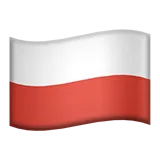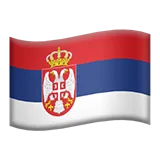The beginning of the school year is the best time to reflect on your development and skills that are worth mastering. Let's talk about designers today.
Netology and AGIMA have conducted research on what a contemporary designer should be like. It is based on labour market statistics and analytics and includes comments from experts from different companies.
We have 25 designers at JetStyle, and of course, we also took part in this study) Our art directors and market colleagues have shared their opinion on:
- what areas of design are most in-demand,
- what skills are most important,
- what employers pay attention to during interviews.
And here is what our teammates from JetStyle have said.

1. The main trends in design
Evgeny Kazakov
3D is at the head of the trend again, just like 20 years ago, but from a different angle: volume and everything connected with it - from typography to icons. Micro-plots in 3D (voxel graphics, etc.), volumetric shapes flowing into illustrations. Particular attention is paid to the materials of objects (glassmorphism, etc.) and abstract elements.
As well as:
- Patterns and optical illusions will always occupy their niche, just like cartoon illustrations - this is a constant trend in their separate application.
- Typography and various arts compiled with printing and the web are relevant again and work well in their own way.
- Nature and minimalism, along with vintage and fashion from the 80s and 90s, compete from project to project, creating a balance in the advertising market.
- Animation can hardly be called a trend, it is always relevant as a tool, therefore today, within the framework of the web and interaction at all levels, its significance is very high.
Artem Kupelsky
If we talk about interface design, then it is no longer isolated. This is the main change that has taken place in the market over the past few years and has allowed us to bring the quality of solutions to a fundamentally new level.
Konstantin Ostroukhov
More and more attention is paid to animation, reactions to user actions. WebGL is widely used: 3D and shaders. The number of styles and trends is growing: from neumorphism to sites where everything is done only with typography, simple shapes and animations.
Ivan Knyazev
Minimalism.
Generative design.
Voxel graphics, low poly and smooth 3D.
Motion.
2. The most in-demand areas of design today
Evgeny Kazakov
All areas of design are in demand, but if you choose the best ones, then:
- at the head, of course, is interaction design, with a thin line of animation and motion design (web and mobile design with a product component, 3D / AR / VR, game design, artificial intelligence design in all its forms);
- advertising and graphic design doesn't lose its relevance (although it is moving more and more into interfaces);
- product line design on a par with interior design (very often - by interacting);
- industrial and automotive design takes its place;
- and wider areas – architectural and landscape design.
Artem Kupelsky
I think that design is cyclical, so you can't be an unclaimed designer – sooner or later, any field becomes relevant again as new technologies and tools develop.
Konstantin Ostroukhov
Product design, mobile application design.
Maxim Smirnov
It all depends on the area, project, type of development. A large number of companies with in-house design teams creates a demand for product designers. The development of different types of reality, accordingly, requires people who can work with 3D - both artists and interface designers. Illustrators, motion designers. In general, all designers are needed and important.
Ivan Knyazev
Fonts and 3D typography. Rendering and animation.
3. Skills that are important for a designer
Evgeny Kazakov
Hard Skills
It is very important to know the tools in the areas of your activity. However, I believe that you need to be a universal specialist.
And you also need to be able to:
- present ideas on paper in the form of diagrams, blocks, elements or graphic solutions using a pen/pencil/marker;
- transfer these ideas into interfaces and layouts through various programs, but with belonging to prototyping and web design, printing and illustration, 3D and spatial reality;
- wrap the idea with the presented structure in interactive design layouts with navigation and necessary animation to present ideas in the best possible way.
Soft Skills
I consider a systematic approach to any issue and the possibility of spatial thinking to be very important criteria.
An important element of creative activity is orderliness (including the order in layouts) and adherence to deadlines according to previously set estimates (balance of your abilities in relation to implementation).
A special character trait is tact and kindness, the ability to approach the problem from different angles and the ability to admit and correct one's mistakes.
And, of course, communication skills, discipline, and mutual assistance.
Konstantin Ostroukhov
The ability to competently write texts and clearly articulate your thoughts.
Ability to work with composition, typography, knowledge of interface design practices and the basics of animation. Knowledge of 3D will be a bonus.
In terms of tools: Figma, Photoshop, After Effects, Cinema 4D, Blender.
In terms of soft skills: the ability to work in a team, an adequate perception of criticism, a desire for new things and learning, the ability to plan your time.
Maxim Smirnov
I would highlight several important skills:
- the ability to define the goal of setting a task of any degree of adequacy, complete with the ability to ask the right questions to define this goal;
- to quickly put yourself in the user's place;
- not to fall in love with your layouts;
- to look at the solution/idea /proposal from different angles;
- not to reject something categorically.
Ivan Knyazev
Hard Skills: design thinking, ability to understand fonts, understanding of UI / UX.
Soft Skills: flexibility, communication, teamwork, watchfulness.
Anna Tatyankina, HR Director
If a person has a head on their shoulders, then hard skills can be developed. Therefore, for us, soft skills are more important – we won't hire a person who is super hard skilled if they don't fit in and cannot become a part of the team.
Here's what is important to us:
- speed – in work on tasks is measured in comparison with other employees;
- predictability is more important than speed because we work in custom development, and process control is important to us. There are two types of predictability:
- human – that is, you cannot just disappear for a day, and then say, for example, that you had an appointment with the dentist;
- working – it is about the ability to evaluate tasks and estimate your workload and deadlines, and, most importantly, about the ability to meet your estimates. And if something goes wrong – to warn and talk about it before we screwed up;
- learnability – we want to work with people who want to learn new things and show interest themselves, who are not afraid to ask questions, are curious and easy to learn;
- independence – it is a scale from trainee to lead, from the state that a person needs to be monitored and corrected, to a person who can be approached with a top-level task. In general, this is about the degree of abstraction at which the task can be given, the level of decomposition required and the amount of additional management that must be spent to achieve the promised result by the promised time.
4. Should a designer master related directions?
Evgeny Kazakov
It all depends on the level of professionalism, but in the global sense – yes, they should.
A product, graphic or any other designer makes a product in one way or another, or a part of this product, and it certainly wouldn't hurt to understand how their work is tied to business processes. And if it is a web product, then understanding analytics and other metrics that affect conversion, value, cost, etc., will directly affect the UI / UX design of this product. And we cannot ignore the matter of taste, which is clearly justified by metrics and various tests.
Artem Kupelsky
I think they should if:
- the designer is interested in their own professional growth and is excited to master the new field;
- the studied field will increase to one degree or another the quality of the products on which the designer is working;
- there is a need to understand the processes along the entire product development chain.
You always need to build on the context and the ultimate goal that the designers set for themselves. Somewhere you may need a specialist with a wide range of skills, but in some tasks, you will need a specialist who can solve them as efficiently and predictably as possible.
Konstantin Ostroukhov
It seems so. This broadens the designer's horizons, and makes their view of the problems being solved more versatile.
Maxim Smirnov
Of course, you should. Any broadening of horizons is useful. This gives the person new ways to understand the problem and fills the piggy bank of ideas for the future.
For example, in the case of analytics, in addition to the ability to replace a specialist who is not available at the right time, the designer gets a set of typical questions/hypotheses/solutions to find out where their skills need to be applied.
Or, for example, basic knowledge in the field of video editing can help you quickly show a client, art director or motion designer where to tweak something.
And most importantly, you shouldn't be limited to digital only. Look at industrial design, commercials, fashion shows, go to theatres – anywhere from a random sequence of events, you can replenish your piggy bank of ideas.
Ivan Knyazev
Yes. This is about flexibility – a narrow specialist will not survive. You need to know at least a little bit of programming or understanding the code, plus the basics of 3D.
5. What do we pay attention to at interviews?
Evgeny Kazakov
First of all, we pay attention to the person and their ability to be themselves in various situations, how confidently they position themselves within the framework of the story about their work and their experience, whether they are comfortable or not.
How good is the presentation of the portfolio – originality, the author's participation in the presented work, the content of the projects, the depth of their elaboration, the results and useful skills that the candidate acquired in the process of working on the project.
In the end, it is worth getting feedback from the interviewee.
Artem Kupelsky
There will be correspondingly different expectations from specialists of different levels, but if we talk about the general qualities that each potential candidate should have, then these are commitment, predictability and independence.
Konstantin Ostroukhov
The way a person responds to criticism.
How they evaluate their level as a designer.
How they reflect, when we analyse their work together.
What goals they have, what they want to achieve.
Maxim Smirnov
The ability to work with feedback.
The ability to both praise and criticise yourself.
The way the candidate worked with the test assignment, how they explained their decisions.
Ivan Knyazev
Portfolio.
The way the person learns.
Interest in work, what they want from work.
Emotional compatibility.
As you can see, a contemporary designer has a lot of work to do. And not only on your professional qualities – to follow trends, develop your knowledge, be able to work with different tools, but also on your personality – to be an interested, flexible and reliable team player. We hope that the advice from our art directors has helped you better understand the design field and find out what you are missing to get closer to your professional goals.








